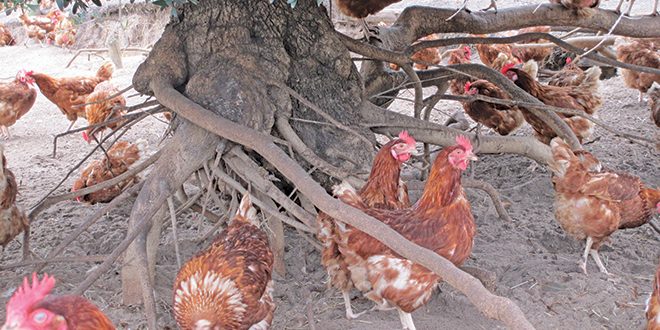In July 2020, Carolyn de Koning of the South Australian Research and Development Institute undertook a research project into the plants hens on free range farms prefer. The aim of the project was to consolidate available agronomic information and provide an up-to-date resource for free range egg farmers on what and how to plant on the range. To complete the project, Dr de Koning integrated existing research on the topic, as well as learnings from five ‘case study farms’ that she had worked with throughout the project.
Plants, both ground cover and trees, grown on free range layer farms provide a vital role by enriching the outdoor range and creating an attractive area for hens to go outdoors and explore. However, specific information on what to grow and how to go about sowing pastures and planting trees and shrubs is not easy to find for free range egg farmers, with material spread across many and varied sources. Therefore, the main aim of the project was to consolidate agronomic information on the how and what to plant, while also taking into consideration the main climatic zones of Australia.
The project had three components:
- Case study farms to see what plant species and how farms establish and maintain vegetation on the range
- Development of a guideline package on what and how to plant a range
- The planting of perennials to enhance the outer range areas to increase utilisation by hens.
Information generated from components one and three were incorporated into the guideline package.
Important findings
Perennial pasture plants are very important and in the case study farms both perennial grasses and perennial legumes were utilised. When annual species had died off for the season, perennials provided some green ground coverage. This was most evident on the farms in the Australia temperate mediterranean zone during summer. It is difficult to achieve even usage by hens across the range.
Hens utilise the areas closest to the shed more often. Temperature and wind strength have a big impact on the hen’s willingness to go further out on the range. Hens are less likely to venture to the outer range if temperatures are above 25C and it is windy. As a result of hen ranging behaviour, botanical composition of the ground cover species will change according to the distance from the shed, with more activity and hen numbers closest to the shed and less activity and hen numbers furthest from the shed. Weed species tend to be present closest to the shed.
Drier climates and drought conditions limit the opportunities for free range farms to re-sow ground cover on the range and to plant trees and shrubs. However, free range farms in drier climatic zones can benefit from growing shrubs such as oldman saltbush.
In the case study farms, tree and shrubs played a vital role on the range providing shade, shelter and dustbathing sites. All farms were actively planting trees and shrubs with hardy local species used. Furthermore, trees needed protection around the root zone from hen activity, especially ranges stocked at 10,000 hens/ha. For the full report, visit australianeggs.org.au/assets/research/documents/Resilient-plants-to-entice-hens-outdoors.pdf

